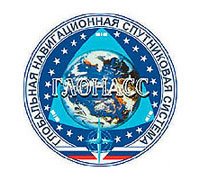GLONASS - From Russia with love?

Whether using a dedicated device or a smartphone, GPS is an important navigational tool for an increasing number of walkers. So many will know that one of the downsides of the technology - and the reason it can never fully replace the low tech map and compass - are the problems with signal acquisition and other reception difficulties.
However this situation is set to improve somewhat as the number of satellite networks continues to increase.
The latest service to hit the headlines is GLONASS.
GLONASS (Global Navigation Satellite System) is The Russian Federation's version of the US GPS (aka NAVSTAR).
Starting in 1976, development of GLONASS was originally focused on the military. However it now also supports civilian applications. The development programme languished for a number of years but was funded again from 2002.
Full deployment consists of 24 orbiting satellites - 21 of them provide geo-location signals and the remainders are spares. The systems configuration is such that at least 5 GLONASS satellites plus positioning signals are always available at any given time and place.
The latest satellite was launched at the end of October 2011 - bringing the constellation up to the level needed to provide full global coverage. More launches are planned in the coming months to improve the resilience of the service.
The technical differences between GLONASS and the US NAVSTAR system stem from the structure of the signal and the mathematical models underpinning the satellites' motion.
The number of satellites in use operationally is also different. GLONASS consists of 24 whilst the US NAVSTAR sytems can operate with 24 but is currently using 31.
GLONASS in theory improves on the performance of the US GPS in high northern latitudes - apparently the US GPS doesn't work at all over the North Pole; and it is expected to offer 1 metre accuracy within three years. Nearer to home, it also claims to eliminate the blind spots experienced with the US GPS in high density urban areas.
Many countries are planning to make strategic use of GLONASS including Canada and members of the EU.
Consumers should also soon be able use devices that use both systems in tandem as all major manufacturers are expected to produce GPS/GLONASS dual operation models for the mass market. (In fact Apple's iPhone 4S already supports GLONASS alongside the US GPS.) These hybrid versions should - in theory - reduce some of the performance problems experienced with current models.
Spasiba!
The views expressed by contributors to this discussion are not necessarily those held by go4awalk.com.
Add your comment to THIS article | Start a NEW Discussion




















